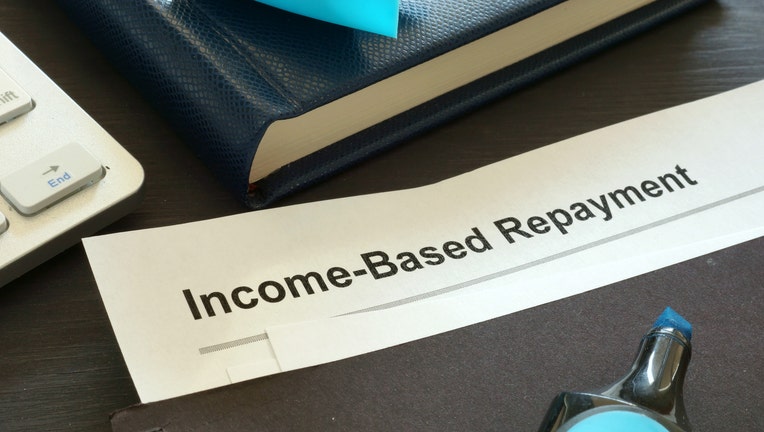Can an income-driven repayment plan help get my student loans forgiven?

If you can’t afford your student loan payments, enrolling in an income-driven repayment plan can help you get some relief. (iStock)
Student loan debt in the U.S. has more than tripled since 2006, according to the Federal Reserve Bank of St. Louis, and as of the first quarter in 2021, Americans currently owe $1.729 trillion in student loans.
For some student loan debt holders, repaying this debt is a huge burden. In 2019, 17% of adults with outstanding student loan balances were behind on their payments, according to the Federal Reserve.
Although wide-scale student loan forgiveness hasn’t passed, some borrowers can get relief by enrolling in income-driven repayment plans.
Student loan refinancing is also an alternative option for borrowers who want to save money but don’t qualify for such plans. If you’re interested in refinancing your private student loans, use a tool like Credible to compare student loan refinancing rates from multiple lenders at once without affecting your credit.
5 WAYS TO GET THE BEST STUDENT LOAN REFINANCE RATES
What is an income-driven repayment plan?
An income-driven repayment plan is a student loan repayment plan that bases your monthly payments on your income and family size. Since it’s based on those factors, it might be cheaper than the 10-year standard repayment plan.
Only federal student loan borrowers who meet certain requirements are eligible to enroll in income-driven repayment plans. Unfortunately, there is no similar option that exists for private student loans.
However, one way to manage private student loan debt is to consider refinancing your loan. Use an online student loan refinancing calculator to get a sense of what your new monthly payments could be.
7 OF THE BEST PRIVATE STUDENT LOANS IN 2021
Can an income-driven repayment plan help get my student loans forgiven?
When you enroll in an income-driven repayment plan, it’s possible to get your student loan balance forgiven. The time it takes to have your remaining loan forgiven depends on what income-driven payment program you enroll in.
These are the four income-driven payment options for federal student loans and how long they last:
- Income-Contingent Repayment Plan (ICR) — 25 years
- Pay As You Earn Repayment Plan (PAYE) — 20 years
- Income-Based Repayment Plan (IBR) — 20 to 25 years (borrowed before July 1, 2014)
- Revised Pay As You Earn Repayment Plan (REPAYE) — 20 to 25 years (graduate study)
With each plan, a percentage of your discretionary income goes toward your student loans. The PAYE and REPAYE programs require you to pay 10% of your discretionary income. The IBR plan requires you to pay 10% of your discretionary income; 15% if you took out your student loan before July 1, 2014. The REPAYE requires you to pay 20% of your discretionary income.
After completing each program, your remaining loan balance will be forgiven after 20 to 25 years. However, if you enroll in an income-driven repayment plan and qualify for the Public Service Loan Forgiveness program, your loans could be forgiven after 10 years or 120 "qualifying" payments.
Pros and cons of income-driven repayment plans
Before enrolling in an income-driven repayment plan, you should consider its pros and cons.
Pros
The pros of repayment plans include:
- Lower monthly payments
- Reduced loan amount
1. Lower monthly payments. Since your monthly payments are based on your discretionary income, they could be more affordable. For example, if you're retiring with student loans, you might find it easier to afford everyday expenses on top of your student loan payments.
2. Reduced loan amount. Having a portion of your student loan balance forgiven reduces the total amount you pay back, freeing up money to put toward your other financial goals.
Cons
The cons include:
- Staying in debt longer
- Taxes on the forgiven amount
1. Staying in debt longer. If your goal is to be debt free, utilizing a repayment plan will keep you in debt longer.
2. Taxes on the forgiven amount. The forgiven student debt might be taxed if the current law changes.
If you don’t qualify for an income-driven repayment plan and have private student loans, you might consider student loan refinancing. Use an online tool like Credible to view a rates table that compares rates from multiple student lenders at once.
HAVE $100,000 IN STUDENT DEBT? 5 WAYS TO HELP PAY IT OFF
The bottom line
If your federal student loan payments are too high, an income-driven repayment plan can make them more affordable. After making payments for 10 to 25 years, your remaining student loan balance can be forgiven. The time it takes for your loans to be forgiven will depend on which type of income-driven plan you enroll in.
Before you enroll in this plan, though, consider its pros and cons. A downside is that this debt can affect you for decades. If your goal is to be debt free soon, it might not be the best plan for you.
This option isn’t available to you if you have private student loans. If this is the case for you, you might consider refinancing instead to save money. Use a tool like Credible to get prequalified student loan refinancing rates without affecting your credit score.
HERE ARE SOME OF THE BEST STUDENT LOAN FORGIVENESS OPTIONS
Have a finance-related question, but don't know who to ask? Email The Credible Money Expert at moneyexpert@credible.com and your question might be answered by Credible in our Money Expert column.

